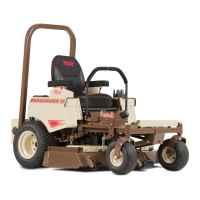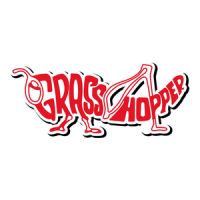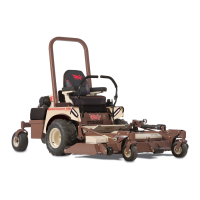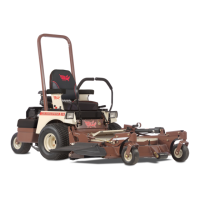37
Fig. 19
Fig. 20
DECK BELT REPLACEMENT
(Refer to Fig. 20)
Major causes of belt failure are improper instal-
lation and tension. Before installing a new belt,
check spindle shafts and bearings for excessive
endplay and wear by moving each spindle shaft
side to side and up and down. Be sure they turn
smoothly and freely. Make sure idler is still
aligned with spindle sheaves. Check sheave
grooves for cleanliness and wear. If grooves
require cleaning, use a cloth moistened with
a nonfl ammable nontoxic degreasing agent or
commercial detergent and water.
Avoid excessive force during installation. Do
not use tools to pry belt on or roll belt over
sheaves. This can cause hidden damage and
premature belt failure.
1. Position the mower deck in the lowest (1.5
inch) (38mm) cut height setting and remove
the left and right belt shields.
2. Loosen the lock nut (A) and back off (coun-
terclockwise) the draw nut (B) until tension
is released from the old belt (C) and it can be
lifted off the deck sheaves.
3. Install the new belt following Fig. 20 for
proper belt routing.
4. Reset the belt tension using the procedure in
the “Deck Belt Adjustment”.
5. Re-install the left and right belt shields.
B
A
C
12074
DECK BELT ADJUSTMENT
(Refer to Fig. 19)
The belt tension is set at the factory, but may
need adjustment after the fi rst hour of initial use.
Periodically belt should be checked for proper
tension, following the procedure below:
1. Position the mower deck in the lowest (1.5
inch) cut height setting.
2. Loosen the lock nut (A) and adjust the draw
nut (C) to change belt tension.
3. Increase belt tension by turning the draw nut
(C) clockwise and decrease belt tension by
turning the draw nut counterclockwise.
4. The idler spring (B) body length should
measure approximately 5.75" for proper belt
tension.
5. Tighten the lock nut (A) when the proper
belt tension is achieved.
BELT TO CLUTCH
A
B
C
12072
52 DECK
